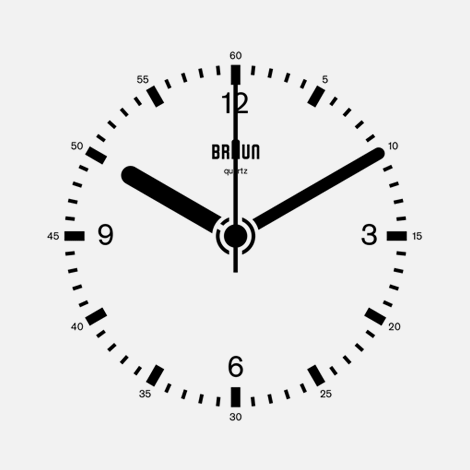A Guide to New York’s 30.30 Speedy Trial Rights
 Every person who is charged with a crime anywhere in the United States has the right to have a Speedy Trial. It’s written in the Bill of Rights, the Sixth Amendment to the U.S. Constitution: “In all criminal prosecutions, the accused shall enjoy the right to a speedy and public trial. . .”
Every person who is charged with a crime anywhere in the United States has the right to have a Speedy Trial. It’s written in the Bill of Rights, the Sixth Amendment to the U.S. Constitution: “In all criminal prosecutions, the accused shall enjoy the right to a speedy and public trial. . .”
But what does the right to a Speedy Trial mean for people facing prosecution for criminal charges in New York? It means that criminal charges will be dismissed if enough time passes after the date a criminal action commences, which is usually an arraignment but also includes an indictment prior to an arrest. That’s right, a criminal case is over if one’s right to a Speedy Trial is violated. Lately, however, the right to a Speedy Trial is an elastic principle due to court congestion and less than honest practices by prosecutors.
Speedy Trial Overview in New York
The U.S. Constitution does not set a time limit for the right to a Speedy Trial, but New York law does. Section 30.30 of the New York Criminal Procedure Law says:
- 90 days for a Class A Misdemeanor (punished by up to 1 year in jail);
- 60 days for a Class B, Misdemeanor (punished by up to 90 days in jail);
- 30 days for a Violation (punished by up to 15 days in jail); and
- 180 days for a Felony.
I encourage people to think of Speedy Trial time as a clock. In New York, the right is commonly referred to as “30.30,” named after the section of law. As described below, the 30.30 clock may begin ticking on the day after an arraignment—when a defendant is brought before a judge for the first time, the charges are read, a plea is entered, and bail, if any, is set. The calculations for the 30.30 clock differ somewhat between misdemeanors and violations on one hand, and felonies on the other because the latter involves the Grand Jury.
Un-speedy Trials in New York
 But—and this is a very big but—30.30 time may not actually start running on the day after arraignment. There are many, many reasons the clock starts and stops. In fact, the 30.30 clock may not even start running until after the first date for hearing and/or trial, which is usually many months after arraignment. And, here’s an even bigger but, while a case could be hundreds of days or even years old, the 30.30 clock may still be less than 90 days for the most serious misdemeanor or less than 180 days for a felony. The New York Times, speaking of class B misdemeanors, summarized the problem with an article and an annotated calendar called “How 60 Days Turn Into 600 in a Misdemeanor Case.” Incredibly—and counter to the very point of the important constitutional principle—the 30.30 clock totaled less than 60 days even though a criminal case exceeded that period by nearly a year and a half. Events like hurricanes and even Coronavirus likely impact Speedy Trial time.
But—and this is a very big but—30.30 time may not actually start running on the day after arraignment. There are many, many reasons the clock starts and stops. In fact, the 30.30 clock may not even start running until after the first date for hearing and/or trial, which is usually many months after arraignment. And, here’s an even bigger but, while a case could be hundreds of days or even years old, the 30.30 clock may still be less than 90 days for the most serious misdemeanor or less than 180 days for a felony. The New York Times, speaking of class B misdemeanors, summarized the problem with an article and an annotated calendar called “How 60 Days Turn Into 600 in a Misdemeanor Case.” Incredibly—and counter to the very point of the important constitutional principle—the 30.30 clock totaled less than 60 days even though a criminal case exceeded that period by nearly a year and a half. Events like hurricanes and even Coronavirus likely impact Speedy Trial time.
Criminal cases that drag on for years are a huge burden for defendants and especially cruel for defendants who are incarcerated and unable to make bail while awaiting trial. The New Yorker reported on the heartbreaking case of Kalief Browder, who was held in Rikers Island on $3,000 bail while awaiting trial for robbery and larceny in the Bronx for three years (the applicable Speedy Trial time was 6 months because it was a felony prosecution). After two and a half years passed without a trial, the prosecutor offered Browder a sentence of time already served in exchange for pleading guilty to a felony. That meant that Browder could have walked out of the courtroom that very day a free man if he had pleaded guilty, but he refused, maintaining his innocence. At a later court appearance, a Judge who was brought into the Bronx to reduce the backlog of cases awaiting trial made Browder a better offer: a guilty plea to two misdemeanors for time already served. He refused again.
After more than 1,000 days on Rikers Island, including more than 400 days in solitary confinement, the Bronx DA’s office dismissed the case against Browder. The prosecutor explained that a witness necessary to convict Browder had moved to Mexico and was unavailable for trial. Unexplained by the prosecutor is where that witness was when previous adjournments were granted without starting the 30.30 clock for the entire time between the dozens of adjournments for trial. Sadly, about two years after he was released from Rikers, Browder committed suicide.
In order to explain recent developments in New York’s Speedy Trial law, it is necessary to explain the reasons for starting and stopping the 30.30 clock. Speedy trial can be divided into two periods of time, pre-trial date and post-trial date.
Readiness for trial only requires a prosecutor to be able to make a prima facie case, the bare minimum, when witnesses are theoretically available to travel to court to testify within a reasonable period of time. Readiness may literally be announced by a prosecutor in court by saying “The People are ready for trial.” This often happens in arraignments in the Bronx, and the practice is laughable. The prosecutor has not spoken to a single witness in the case before making the statement, yet they claim to be ready for trial.
The prosecutor may also stop the 30.30 clock by filing what is known as a certificate or statement of readiness, like the one below, which is a certification from a prosecutor that the People are ready for trial on the date that is filed for the aforementioned reasons. Yes, a piece of paper stops the 30.30 clock.
Pre-Trial 30.30 in New York for Misdemeanors and Violations
 In misdemeanor cases, the 30.30 clock usually does not start if the criminal complaint filed at arraignment is based only on the observations that are personally observed by the person who signed the complaint, which is usually a police officer. In that event, the case will usually be adjourned for discovery or motion practice by a defense attorney. That means that the 30.30 clock will usually read zero even if the criminal case is adjourned a few times over the course of several months.
In misdemeanor cases, the 30.30 clock usually does not start if the criminal complaint filed at arraignment is based only on the observations that are personally observed by the person who signed the complaint, which is usually a police officer. In that event, the case will usually be adjourned for discovery or motion practice by a defense attorney. That means that the 30.30 clock will usually read zero even if the criminal case is adjourned a few times over the course of several months.
The trade-off for 30.30 time not running during discovery or motion practice is that a defense attorney may receive material about the case well in advance of when they are entitled to it under law, which is at a hearing or trial. And, by filing motions, a defense attorney may be granted the opportunity to argue for certain hearings prior to trial where he or she may try to suppress evidence because it was obtained unconstitutionally: for example, statements made by the defendant to law enforcement, property recovered from the defendant by law enforcement, or the identification of the defendant by a civilian witness.
When a misdemeanor criminal complaint contains hearsay, statements or observations of another person, the 30.30 clock will run from arraignments until a prosecutor files a supporting deposition from the person (or persons) swearing that everything in the criminal complaint is true because it is based on personal knowledge. The People cannot say they are ready for trial until the hearsay is purged from the complaint (in legal terms this means that the complaint is deemed an information).
Pre-Trial 30.30 in New York for Felonies
In New York, in order for a felony prosecution to go forward, a Grand Jury must vote to indict a defendant. The former Chief Judge of the Court of Appeals famously remarked, “You could indict a ham sandwich.” In felony prosecutions, the 30.30 clock generally will not stop until after an indictment, which may be many weeks, when a prosecutor announces readiness for trial in open court or files a certificate or statement of readiness. However, if a person is indicted before they are arrested, a no arrest or “NA” indictment, the 30.30 clock starts to run when the indictment is filed, not when a defendant is arraignment, which may come later.
Alternatively, a defendant may waive indictment by the Grand Jury. This usually occurs when a defense attorney is in active negotiations with a prosecutor for a favorable disposition. For strategic reasons, a defense attorney may waive 30.30 time, thereby voluntarily agreeing to stop the 30.30 clock. Prosecutors usually require a defense attorney to waive the time in such cases. In fact, this may occur at various stages of a case in order to negotiate a plea or receive a more favorable offer than the most highest charge that could be brought before the Grand Jury for indictment.
Post-Trial Date 30.30 in New York
 Once a case is scheduled for hearing and/or trial, it is an opportunity to start or re-start the 30.30 clock. As noted above, in the context of the 30.30 clock, there are differences between the way violations/misdemeanors and felony cases proceed before a case is scheduled for trial, which affects the 30.30 time calculations. However, once a court sets a case for trial, the 30.30 clock acts the same way for misdemeanors and felonies.
Once a case is scheduled for hearing and/or trial, it is an opportunity to start or re-start the 30.30 clock. As noted above, in the context of the 30.30 clock, there are differences between the way violations/misdemeanors and felony cases proceed before a case is scheduled for trial, which affects the 30.30 time calculations. However, once a court sets a case for trial, the 30.30 clock acts the same way for misdemeanors and felonies.
On a court date when a case is scheduled for hearing and/or trial the People will either answer ready or not ready. If the People answer ready, but a trial does not start then the clock stops. (The most common reasons a trial does not start is because there are only a fraction of court rooms and judges necessary to accommodate all of the trial ready cases.) Of course, a trial will only start if the defense is also ready for trial. If the People answer not ready, then the 30.30 clock will run. The most frequently cited reasons for a not being ready are the unavailability of a law enforcement or civilian witness or the assigned prosecutor has another trial or an assignment that prevents him or her from trying the case.
If the People answer not ready for trial, then there are two ways that a prosecutor can stop the 30.30 clock. First is by filing with the Court and serving on defense counsel a certificate or statement of readiness on a later date. On the date of the filing a witness or witnesses must be available to testify in court to make a prima facie case. Theatrically, the prosecutor could file and serve a certificate or statement of readiness one day after answering not ready for trial in open court. That would mean that the net time added to the 30.30 clock would only be one day.
The second way to stop the clock is equal parts controversial and maddening. If, and only if, the prosecutor has previously answered ready for trial in open court or filed a certificate or statement of readiness, then the People may request time. Typically, a prosecutor will say something like “The People request one week,” which could also be two weeks or longer.
When a prosecutor requests a certain period of time, they are telling a judge that they would like the trial to be scheduled on that day, whether one week from the current date or a different period of time. Here’s the madding part: courts never grant the request because of court congestion, hundreds of other cases already scheduled for the date. In that event, the case will be adjourned for eight to twelve weeks, again for trial. Instead of the 30.30 clock running for the entire period of the adjournment, the 30.30 clock only runs for the period of time that the People request, whether it’s one week, two weeks or some other period.
However, in rare circumstances, when a case is more than a year old or when a case has been adjourned many times for trial, a Judge may grant a prosecutor’s request for a short period of time and adjourn the case for that specific date.
Reasons for a Defendant to Stop the 30.30 Clock
In addition to discovery and filing motions, which are advantageous to the defense, there are several reasons that a defendant could stop the clock. First, if at any point the defendant does not appear at a scheduled court appearance a judge will either issue or stay a bench warrant. The absence of the defendant will stop the clock. (In rare and limited circumstances a judge will excuse a defendant from a court appearance.) The absence of a defense attorney on a trial date will also stop the clock, whether or not the People are ready for trial.
A defense attorney may request a meeting with their client and a prosecutor, known as a proffer or, colloquially as “a Queen for a Day.” The goal of the meeting is to obtain an advantageous plea. Prosecutors will usually require a defendant to waive time, thereby stopping the 30.30 clock, in exchange for the meeting.
Finally, the most common way the clock stops is if on a trial day the defense answers not ready for trial when the People answer ready. The clock stops because the delay is purely due to the defense.
Sibblies and The 30.30 Clock
In People v. Sibblies, New York’s highest court took a bite out of the practice of prosecutors answering not ready, filing a certificate or statement of readiness thereafter and then answering not ready on the very next date for trial. Lower courts have differed on the new rule created by Sibblies because the Court of Appeals was evenly divided as to the rationale; there are two separate concurring opinions, each written by three members of the Court.
The upshot of Sibblies is holding the prosecutor accountable for answering not ready on a trial date, either requesting a brief adjournment which is not accommodated by the court or filing a certificate or statement of readiness and then once again answering not ready on the next trial date. When this occurs, it opens the door for defense attorneys to argue that the entire period of time between trial dates should count towards Speedy Trial time. Courts often require prosecutors to explain the change in circumstances from claiming to be ready for trial and then not answering ready. The precedent of Sibblies has led to an increase of case dismissals due to exceeding the allowable 30.30 time under New York law.
Case Dismissal Based on 30.30
If a case has gone beyond the allowable time under 30.30, a defense attorney will file a motion to dismiss. The filing of the motion stops the 30.30 clock. In limited circumstances a prosecutor will concede 30.30 and dismiss a case without a motion. This happens often when a prosecutor fails to obtain a supporting deposition within the time period specified in 30.30. In such cases, there is no argument that the 30.30 clock started after arraignments and never stopped.
Whether or not a Judge finds that 30.30 is over the allowable limit is based on math: the sum of the days that the 30.30 clock ran. The most litigated issue in 30.30 motions today is based on Sibblies, but there are plenty of other reasons for a defense attorney to argue successfully that the prosecution should be charged for time.





Hey there, You have done an incredible job. I’ll definitely digg it and personally suggest to my friends. I’m confident they’ll be benefited from this website.
My brother recommended I might like this blog. He was totally right. This post actually made my day. You cann’t imagine simply how much time I had spent for this information! Thanks!